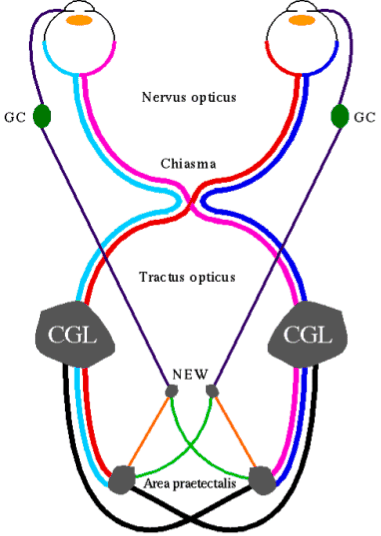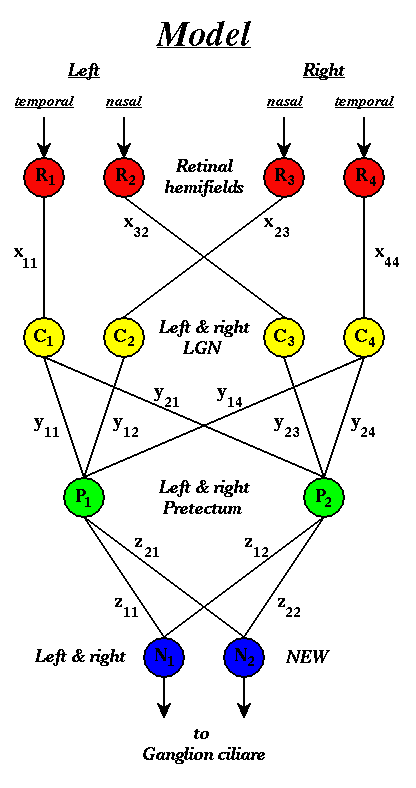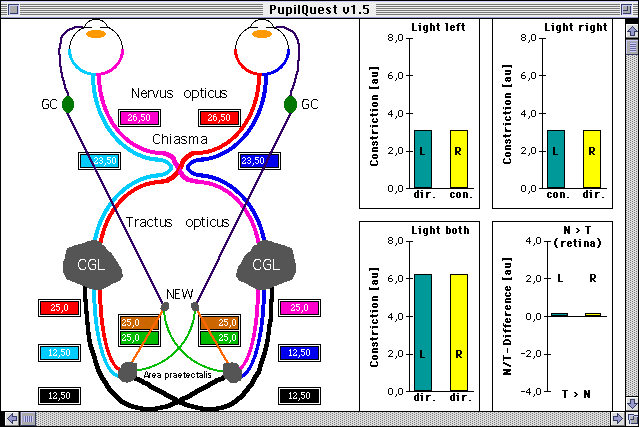 Modeling of the pupillary pathway
Modeling of the pupillary pathway
EVERYTHING WHICH IS PRESENTED ON THIS PAGE HAS ALREADY BEEN PUBLISHED IN SCIENTIFIC JOURNALS UNDER MY AUTHOR- OR CO-AUTHORSHIP! THEREFORE, COPYING OF THE ENTIRE PAGE OR PARTS OF IT IS ONLY PERMITTED WITH REFERENCE TO MY HOMEPAGE AND THE CORRESPONDING SCIENTIFIC JOURNALS, RESPECTIVELY, AND FOR SCIENTIFIC OR EDUCATIONAL PURPOSES ONLY!
Abstract: Derived from models of neural networks, a model for the pupillary pathway
is introduced that can easily be handled
computationally and analytically. To model the binocular
pupillary reactions we use a feed-forward network,
namely, a multi-layered perception. It is possible to
calculate the pupillary reactions analytically as a function of the
light stimuli of the retinal hemifields, on the one hand,
and the set of neural couplings between the neural layers, on
the other. Several lesions, e.g., lesions of the
intercalated neurons between the afferent and efferent pupillary
pathways, can be simulated within the model and the
corresponding pupillary reactions such as anisocoria or
relative afferent pupillary defects (RAPD) can be
calculated analytically. Due to its neural network structure the
model described herein can easily be extended to much more
complex pupillary pathways while remaining
calculable computationally and analytically.
Biological model of the human pupillary pathway
Abstract neural net model of the human pupillary pathway
Computer simulation utility "PupilQuest"
(download)



Please, submit your e-mail address before downloading the
simulation PupilQuest:
here (instructions):
PupilQuest
(for PCs with MS-Excel only!)
 This page is still under construction!
This page is still under construction!

Copyright © by Dr. Wolfgang Fink
e-mail: wf@wfbabcom5.com
Homepage
Last modified: Tue 06 Aug 2002 at 12:13 AM


